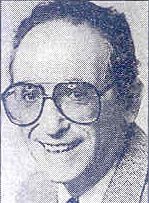Editors Note:
With Clint Eastwood's picture, "The Flag of Our Fathers," playing, the author remembers his time at Iwo Jima
It was a little island. We wondered what was so important. In three and a half months our heavy cruiser, the SALT LAKE CITY, two other cruisers and a bunch of destroyers bombarded the island for hours six different times.
The Japanese responded with planes and big guns from the shore, but we made it out of there safely. The first time we surprised the Japanese so many lights were burning. We managed to sink a destroyer and some landing craft that were presumably carrying reinforcement and supplies.
We even bombarded the island Christmas Eve 1944. "What's the name of that island," I finally asked. "Iwo Jima," a shipmate said. We also had been bombarding Chichi Jima, 450 miles from Tokyo, and Ha Ha Jima with great success so I didn't think so much of it. I thought it was the last we would see of Iwo Jima. We got busy covering the Philippine invasion.
In January, we were back bombarding Iwo with the assistance of battleship, and we helped to shoot down a Japanese plane.
On Feb. 16th, 1945, we arrived once again at Iwo, only this time things were different. There were US ships as far as the eye could see. My battle station was topside on a searchlight so I watched as thousands of landing craft filled with Marines headed toward the shore. Mostly you saw their heads and rifles. You had to wonder what those guys were thinking as their boats neared the shore.
"They are probably praying," one shipmate said.
We waved as their small boats passed. Many waved back.
Meanwhile, our guns were shooting over their heads still trying to soften up the opposition.
For 25 days we surrounded that island pouring shells into every conceivable Japanese target. The only time we stopped was to refuel or reload.
Very little accurate information on how the battle was going filtered down to my ranks. We didn't learn until later how well the Japanese were dug in and the fierce toll they were taking on our Marines. Many of the boys (and most of us were boys, just 18 or 19) who had waved to us would never sail off that island alive.
Years later, at reunions of our ship, I would hear tales about the various battles we had been in that I never knew occurred. However, every shipmate I talked to who had been topside at Iwo seemed to have seen that famous flag go up. Two of us worked the searchlight and another sailor was one of those telling me he had seen the flag rising.
"Where was I," I asked.
"I don't know," he said, "I was watching Mount Suribachi."
Our ship was among the first to arrive and one of the last to leave. We fired 3,322 rounds of 8-inch and 3,082 of 5-inch -- more than any other ship, and that doesn't include the 40mm and 20 mm we fired at planes. All that may have helped, but it was the rifles, flame throwers and mortar men of the Marines who paid the price to secure that small island.
We finally sailed away but our time was coming. We spent 10 days sailing and restocking the ship and then on April 1 we were at Okinawa bombarding that island so the Army and Marines could land. One again the LCt's (Landing Craft Tanks) stocked with fighters were going past. This time, the Navy caught its own hell because the kamikazes caused more Navy casualties than on land. One kamikaze seemed to be coming down on us but rolled over and his the Indianapolis behind us, which went back to the states for repairs and was torpedoed losing almost all hands just before the war ended.
We were on our way to invade Japan when the atomic bombs ended the war. The fierce battle the Japanese put up on those Pacific atolls would have been nothing if their homeland had been invaded. Maybe I didn't see that flag go up in Iwo but I have that photograph hanging on my wall signed by Joe Rosenthal, the Associated Press photographer, who took the picture. I never look at it and don't see those small boats headed for that ash-filled island and the brave guys who took it.

